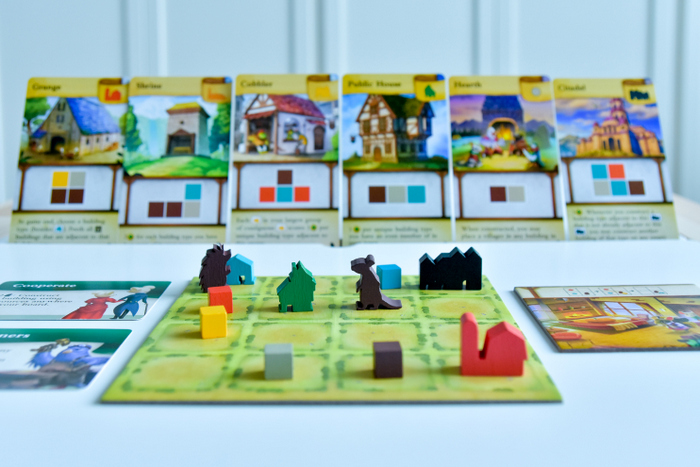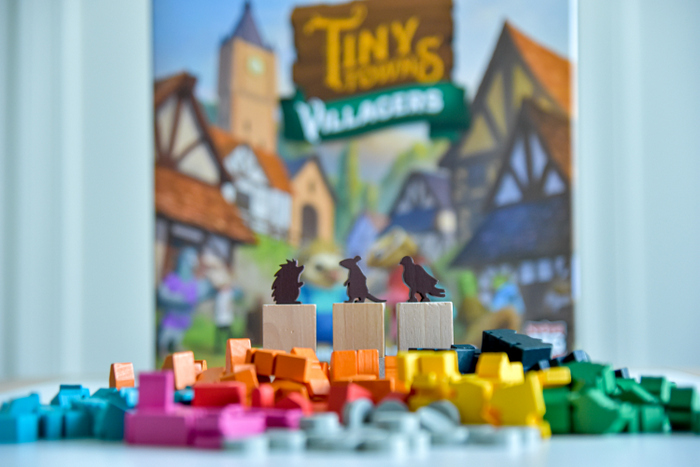
The Tiny Towns civilization is growing and flourishing. It is spoken of in distant lands, and many talented creatures are seeking out this forest metropolis to make their own homes and offer their skills to city officials. They have abilities previously unknown in the region and builders throughout Tiny Towns are seeking their help!
Oh, Tiny Towns, we love everything about you and there’s even more to love now with the addition of the Villagers Expansion and the special abilities they offer to help players build more and better towns.
The Villagers Expansion box includes 23 new building cards that can be mixed in with the original building cards when making the random selections at the beginning of a new game. The new cards add some complexity and more variety and replayability to this already versatile game!
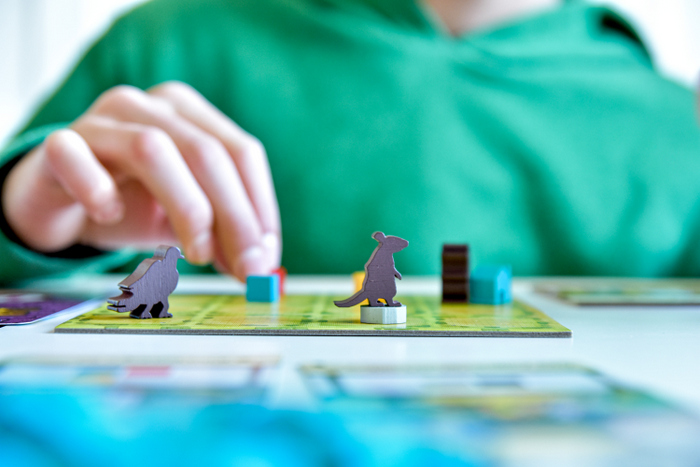
To begin the game, three villager meeples are placed in any three of the four corners of the playing board AND 2 Villager cards are drawn (one 1-point card and one 2-point card).
Villager cards offer special abilities like
- FORAGE: Place a resource of your choice in your town.
- COOPERATE: Construct a building using resources anywhere on your board.
- RENOVATE: Replace any building in your town with any other building type (not Monument).

Players take turns being the Master Builder and choosing the building material that each player must use in their town.
Villagers can’t be in the same space as a resource at the end of a turn.
- If the villager does occupy the same space as a resource and isn’t used to construct a building, it has to move to an adjacent and empty square OR on the Lodge board in the absence of an empty adjacent square.
- If the villager occupies the same space as a resource that IS used to construct a building, but the building isn’t placed in the square with the villager, the villager doesn’t move.
- If the resource is used and the building is placed in the square with the villager, the villager now WORKS in that building and its special ability can be activated and used.
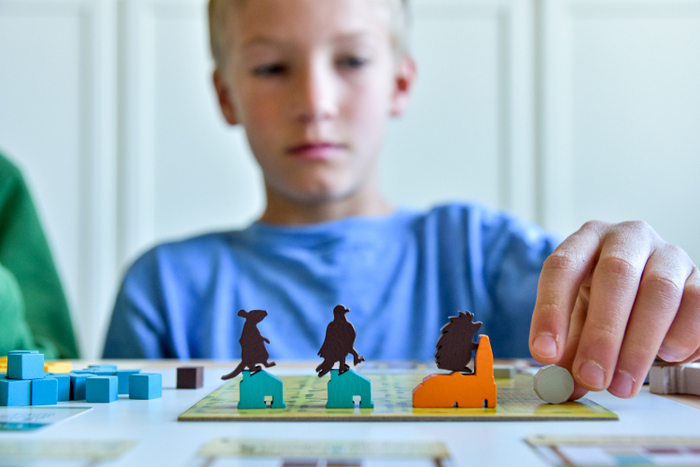
Maneuvering villagers to spots where they can eventually go to work to activate abilities requires a new level of strategy and planning, but it’s worth it! Villager cards require either 1, 2, or 3 workers to activate, so each villager may only be used a few times each game, but a well-timed activation can give you the edge you need to win!

After using a Villager, he goes to The Lodge and is then placed back on the board on any empty square at the end of the round.
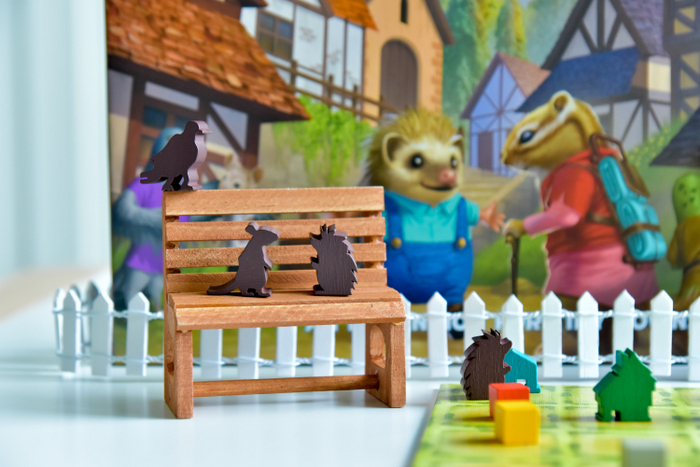
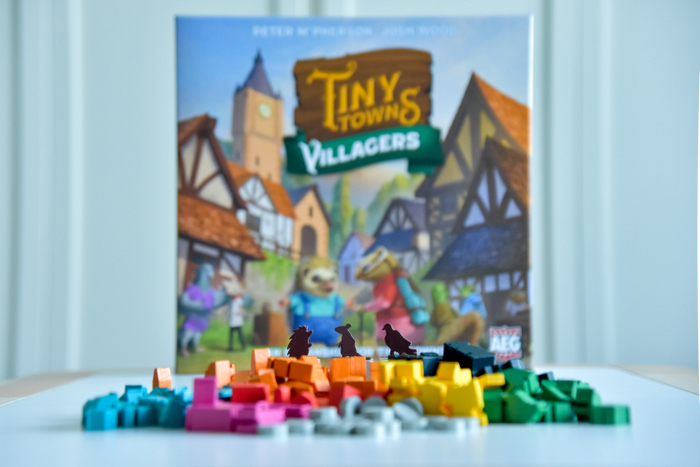
The game continues until each player can only pass on their turn. Points are tallied using the original score sheet for each building type, and the winner is the player who most successfully utilized their Villagers and grew their Tiny Town!
This game is easy to learn, but I find it really challenging to play (in a good way)! The visual/spatial skills required are intense, and if that’s an area that needs some work in one of your students, this game is an excellent way to practice! The more you play, the better you get. Board games use skills, and skills can always be improved!
The Tiny Towns games are also perfect supplements to unit studies on architecture, simple machines, or economics.
Thanks to our favorite, Alderac Entertainment Group, for sharing this expansion with us!
